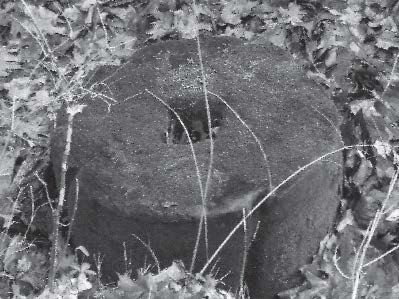By Geoff Gelke, The History Bluffs
This article was first published in the Summer 2022 Clifton Chronicle.
Halfway down the northern curve of Clifton Avenue resides Dr.Thurman Henderson in “Shady Side,” a splendid Italianate mansion built in 1851 by Joseph Clarkson Ringwalt, successful Cincinnati merchant. The hilltop residence is embraced by woodland that, in the 19th century, included a “pretty lakelet” formed by damming the ravine behind the home. Replete with select trees and foliage, the property enjoyed raves in Sydney Maxwell’s 1870 publication Suburbs of Cincinnati. One can imagine the Ringwalts’ pleasure, swimming for over fifty-five years within their private fairyland forest!

Today, Dr. Henderson – a renowned physicist, inventor, engineer and scientist – continues to enjoy vestiges of his property’s past grandeur. He was delighted to recently understand details that formerly eluded comprehension – dozens of 24- to 40-inch-wide round and flat stones, all hiding in plain sight throughout the grounds. Eighteenth century millstones!
These probably came from the 1791 Irwin Mill – a grist mill built along the Mill Creek at the bottom of Clifton Avenue (called Irwin Mill Road until 1848.) The stones are classified as “edge-roller” type, engineered to roll on their wide edge surfaces around a large flat stone. Connected to a center drive shaft, the wheels rolled in circles, crushing grain spread beneath them. The grooves on the edges facilitated the movement of ground grain out to a deep circular pan where the flour was collected and bagged. More than one millstone could be driven by the center shaft, powered by gigantic overhead wooden gears, which were rotated by a waterwheel turning in the creek water’s flow. In periods of drought, the hydraulic flow was assured by a nearby “mill pond” via water channeled downhill in a “race run” (wooden trough). Such simple grist mills were typical in wilderness times when most millstones in America came from France or England, perhaps accompanied by the huge wooden gearing which allowed frontier mills to be constructed quickly.
Much to the disappointment of William Irwin, his mill was eclipsed by the 1830s when the Miami & Erie Canal came through the valley. Among the ruins would have been piles of used millstones, just waiting to be discovered by Mr. Ringwalt and recognized for their potential as pavers. Scores of them were set in place throughout his estate as stepping stones down into the ravine through the woods on the way to the pond. The millstones now protrude irregularly from the ground, shifted by 150 years of erosion.
Thanks to the generosity of Dr. Henderson, visitors to Clifton can now view and touch some of these millstones and imagine them at work in 1791, grinding flour to bake the bread of Clifton’s first farmers. Could these be our community’s oldest relics?
